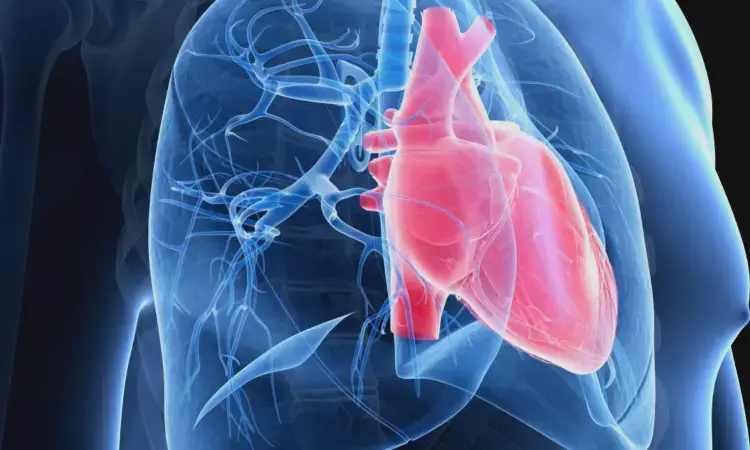- Home
- Medical news & Guidelines
- Anesthesiology
- Cardiology and CTVS
- Critical Care
- Dentistry
- Dermatology
- Diabetes and Endocrinology
- ENT
- Gastroenterology
- Medicine
- Nephrology
- Neurology
- Obstretics-Gynaecology
- Oncology
- Ophthalmology
- Orthopaedics
- Pediatrics-Neonatology
- Psychiatry
- Pulmonology
- Radiology
- Surgery
- Urology
- Laboratory Medicine
- Diet
- Nursing
- Paramedical
- Physiotherapy
- Health news
- Fact Check
- Bone Health Fact Check
- Brain Health Fact Check
- Cancer Related Fact Check
- Child Care Fact Check
- Dental and oral health fact check
- Diabetes and metabolic health fact check
- Diet and Nutrition Fact Check
- Eye and ENT Care Fact Check
- Fitness fact check
- Gut health fact check
- Heart health fact check
- Kidney health fact check
- Medical education fact check
- Men's health fact check
- Respiratory fact check
- Skin and hair care fact check
- Vaccine and Immunization fact check
- Women's health fact check
- AYUSH
- State News
- Andaman and Nicobar Islands
- Andhra Pradesh
- Arunachal Pradesh
- Assam
- Bihar
- Chandigarh
- Chattisgarh
- Dadra and Nagar Haveli
- Daman and Diu
- Delhi
- Goa
- Gujarat
- Haryana
- Himachal Pradesh
- Jammu & Kashmir
- Jharkhand
- Karnataka
- Kerala
- Ladakh
- Lakshadweep
- Madhya Pradesh
- Maharashtra
- Manipur
- Meghalaya
- Mizoram
- Nagaland
- Odisha
- Puducherry
- Punjab
- Rajasthan
- Sikkim
- Tamil Nadu
- Telangana
- Tripura
- Uttar Pradesh
- Uttrakhand
- West Bengal
- Medical Education
- Industry
Implanted Haemodynamic Monitoring promising Tool for PH Management in adults with sRVs

Pulmonary hypertension (PH) poses a common complication for individuals with complete dextro-transposition of the great arteries (D-TGA) after atrial switch (AS) and congenitally corrected TGA (ccTGA) who exhibit subaortic right ventricles (sRVs). This study was published in the Heart journal by Marshall V. and colleagues.
A recent retrospective study has explored the utility of implantable invasive hemodynamic monitoring (IHM) in this patient population, revealing novel applications and its potential impact on heart failure hospitalisation (HFH) and device-related complications.
- Patient Demographics:
The study involved 18 patients with sRVs.
Median age: 43 years (range: 30-54).
Diagnosis: 16 with D-TGA/AS, 2 with ccTGA.
- IHM Applications:
Medical Therapy Titration: IHM played a crucial role in adjusting medical therapy for patients.
Post-Ventricular Assist Device (VAD) Management: IHM facilitated medical management in individuals with transplant-limiting PH post-VAD.
Serial Monitoring for Heart Transplant Referral: IHM enabled the continuous monitoring of pulmonary artery pressures, potentially eliminating the need for repeat catheterizations to identify optimal heart transplant referral times.
- Clinical Impact:
In a median follow-up of 23 months, the rate of HFHs per year remained similar to the period before IHM implementation.
HFHs/year pre-IHM: Median 0 (IQR 0-1.0).
HFHs/year post-IHM: Median 0 (IQR 0-0.8) (p=0.984).
- Device-Related Complications:
Device migration occurred in one patient, but without long-term consequences.
The study underscores the diverse applications of IHM in patients with sRVs, offering valuable insights into managing PH in this complex population. IHM demonstrated effectiveness in medical therapy titration, post-VAD management, and serial monitoring for heart transplant referral. Notably, the overall impact on HFH rates was minimal, emphasizing the potential of IHM in optimizing patient care without significantly altering hospitalization outcomes. The occurrence of a single device-related complication, with no lasting effects, highlights the safety profile of IHM in this context.
Reference:
Marshall, W. H., V., Mah, M. L., DeSalvo, J., Rajpal, S., Lastinger, L. T., Salavitabar, A., Armstrong, A. K., Berman, D., Lampert, B., Wright, L. K., Hickey, J., Metzger, R., Nandi, D., Gajarski, R., & Daniels, C. J. Novel uses for implanted haemodynamic monitoring in adults with subaortic right ventricles. Heart (British Cardiac Society), heartjnl-2023-323206. https://doi.org/10.1136/heartjnl-2023-323206
Dr Riya Dave has completed dentistry from Gujarat University in 2022. She is a dentist and accomplished medical and scientific writer known for her commitment to bridging the gap between clinical expertise and accessible healthcare information. She has been actively involved in writing blogs related to health and wellness.
Dr Kamal Kant Kohli-MBBS, DTCD- a chest specialist with more than 30 years of practice and a flair for writing clinical articles, Dr Kamal Kant Kohli joined Medical Dialogues as a Chief Editor of Medical News. Besides writing articles, as an editor, he proofreads and verifies all the medical content published on Medical Dialogues including those coming from journals, studies,medical conferences,guidelines etc. Email: drkohli@medicaldialogues.in. Contact no. 011-43720751


